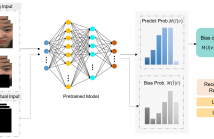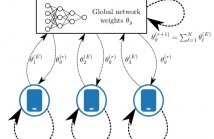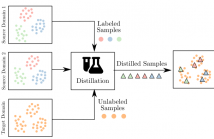
- Read more about SGT: SELF-GUIDED TRANSFORMER FOR FEW-SHOT SEMANTIC SEGMENTATION
- Log in to post comments
For the few-shot segmentation (FSS) task, existing methods
attempt to capture the diversity of new classes by fully uti-
lizing the limited support images, such as cross-attention and
prototype matching. However, they often overlook the fact
that there is variability in different regions of the same ob-
ject, and intra-image similarity is higher than inter-image sim-
ilarity.To address these limitations, a Self-Guided Trans-
former (SGT) is proposed by leveraging intra-image similar-
- Categories:
 28 Views
28 Views
- Read more about Vision Transformer MST++: Efficient Hyperspectral Skin Reconstruction
- Log in to post comments
Channel reconstruction transforms a subsampled mutispectral image into hyperspectral, offering hyperspectral imaging benefits without a dedicated camera. MST++ is a
state of the art channel reconstruction technique, but it faces memory limitations for high spatial resolution images. In this context, we introduce VITMST++, a novel architecture in-
corporating Vision Transformer embedding and compression, multi-resolution image context and a channel-weighted loss. Developed for the ICASSP 2024 Hyperspectral Skin Chal-
- Categories:
 4 Views
4 Views
- Read more about JOINTLY LEARNING SELECTION MATRICES FOR TRANSMITTERS, RECEIVERS AND FOURIER COEFFICIENTS IN MULTICHANNEL IMAGING
- Log in to post comments
Strategic subsampling has become a focal point due to its effectiveness in compressing data, particularly in the Full Matrix Capture (FMC) approach in ultrasonic imaging. This paper introduces the Joint Deep Probabilistic Subsampling (J-DPS) method, which aims to learn optimal selection matrices simultaneously for transmitters, receivers, and Fourier coefficients. This task-based algorithm is realized by introducing a specialized measurement model and integrating a customized Complex Learned FISTA (CL-FISTA) network.
- Categories:
 5 Views
5 Views
- Read more about Partially observable model-based learning for ISAC resource allocation
- Log in to post comments
This paper considers resource allocation problems for integrated sensing and communications (ISAC) systems operating in dynamic shared spectrum scenarios. Specifically, the paper proposes a new Model-Based Online Learning (MBOL) method that accounts for partial observability caused by noisy observations. First, the approach converts the partially observable Markov decision process (POMDP) to the equivalent belief state Markov decision process (MDP). Then, the state prediction model is learned from the sensor observations.
- Categories:
 6 Views
6 Views
- Read more about CAUSALLY UNCOVERING BIAS IN VIDEO MICRO-EXPRESSION RECOGNITION
- Log in to post comments
Detecting microexpressions presents formidable challenges, primarily due to their fleeting nature and the limited diversity in existing datasets. Our studies find that these datasets exhibit a pronounced bias towards specific ethnicities and suffer from significant imbalances in terms of both class and gender representation among the samples. These disparities create fertile ground for various biases to permeate deep learning models, leading to skewed results and inadequate portrayal of specific demographic groups.
- Categories:
 3 Views
3 Views
- Read more about Noisy-ArcMix: Additive Noisy Angular Margin Loss Combined With Mixup for Anomalous Sound Detection
- Log in to post comments
Unsupervised anomalous sound detection (ASD) aims to identify anomalous sounds by learning the features of normal operational sounds and sensing their deviations. Recent approaches have focused on the self-supervised task utilizing the classification of normal data, and advanced models have shown that securing representation space for anomalous data is important through representation learning yielding compact intra-class and well-separated intra-class distributions.
- Categories:
 3 Views
3 Views
- Read more about Federated Dataset Dictionary Learning For Multi-Source Domain Adaptation
- Log in to post comments
In this article, we propose an approach for federated domain adaptation, a setting where distributional shift exists among clients and some have unlabeled data. The proposed framework, FedDaDiL, tackles the resulting challenge through dictionary learning of empirical distributions. In our setting, clients' distributions represent particular domains, and FedDaDiL collectively trains a federated dictionary of empirical distributions. In particular, we build upon the Dataset Dictionary Learning framework by designing collaborative communication protocols and aggregation operations.
- Categories:
 2 Views
2 Views
- Read more about Multi-Source Domain Adaptation meets Dataset Distillation through Dataset Dictionary Learning
- Log in to post comments
In this paper, we consider the intersection of two problems in machine learning: Multi-Source Domain Adaptation (MSDA) and Dataset Distillation (DD). On the one hand, the first considers adapting multiple heterogeneous labeled source domains to an unlabeled target domain. On the other hand, the second attacks the problem of synthesizing a small summary containing all the information about the datasets. We thus consider a new problem called MSDA-DD.
- Categories:
 4 Views
4 Views
Weak-label learning is a challenging task that requires learning from data "bags" containing positive and negative instances, but only the bag labels are known. The pool of negative instances is usually larger than positive instances, thus making selecting the most informative negative instance critical for performance. Such a selection strategy for negative instances from each bag is an open problem that has not been well studied for weak-label learning.
- Categories:
 1 Views
1 Views
Contrastive learning has demonstrated great effectiveness in representation learning especially for image classification tasks. However, there is still a shortage in the studies targeting regression tasks, and more specifically applications on hyperspectral data. In this paper, we propose a contrastive learning framework for the regression tasks for hyperspectral data. To this end, we provide a collection of transformations relevant for augmenting hyperspectral data, and investigate contrastive learning for regression.
- Categories:
 24 Views
24 Views